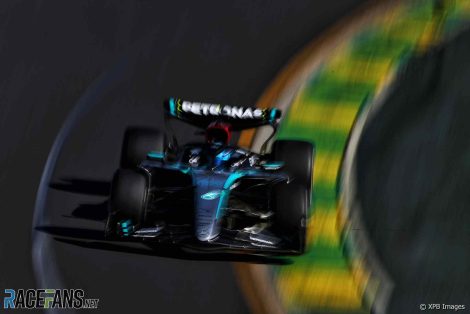Formula 1 stewards are not known for using stylistic flourishes when describing their decisions, which made document 54 of the 2024 Australian Grand Prix unusual.
They wrote a series of rhetorical questions to explain their decision to hand a post-race drive-through penalty to Fernando Alonso.
Whether or not you agreed with the call (which has proved divisive here), all sides of the debate should appreciate the stewards taking the time to explain their reasoning. It’s certainly preferable to the days when, following hours of deliberation, their decisions were announced in single-sentence statements with no accompanying explanation.
The decision was likely to provoke controversy whether it came down on Alonso’s side or that of the driver who crashed in his wake on the penultimate lap, George Russell. It appears the stewards realised that and took the time to detail why they had sanctioned a driver who had seemingly done nothing more than lift his throttle, and issued a drive-through penalty rather than the more common and less severe five- or 10-second varieties.
Alonso was given a 20-second post-race penalty for decelerating suddenly in front of Russell as they approached turn six. The pair made no contact, but the stewards called Alonso’s abrupt reduction in speed an “extraordinary” piece of driving which “was at very least ‘potentially dangerous’.”
This claim was refuted by Alonso in a press release issued by the team afterwards. “I wanted to maximise my exit speed from turn six to defend against him,” he said. “That’s what any racing driver would do, and I didn’t feel it was dangerous.”
Alonso expanded his criticism of the decision in a post shared across his social media feeds. Several of his points had been addressed by the stewards in their 557-word decision two hours earlier.
No crash, no investigation?
As far as Alonso is concerned, the stewards wouldn’t have bothered to look into his approach to the corner had Russell not crashed. The Mercedes driver lost control in Alonso’s wake as he arrived at the bend suddenly much closer to the Aston Martin than he anticipated.
Russell ran wide onto the gravel, then hit a barrier. Had the corner been bordered with asphalt, as many in F1 are, he may have been able to avoid crashing. “I believe that without gravel on that corner, on any other corner in the world we will never be even investigated,” Alonso wrote.
The…
Click Here to Read the Full Original Article at RaceFans…

